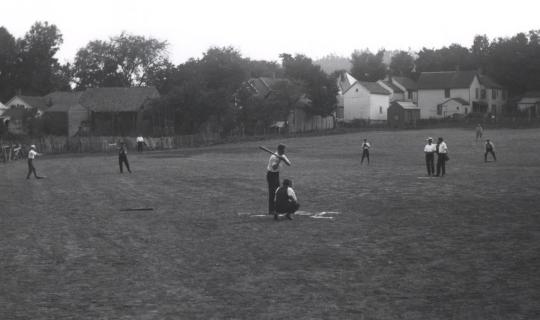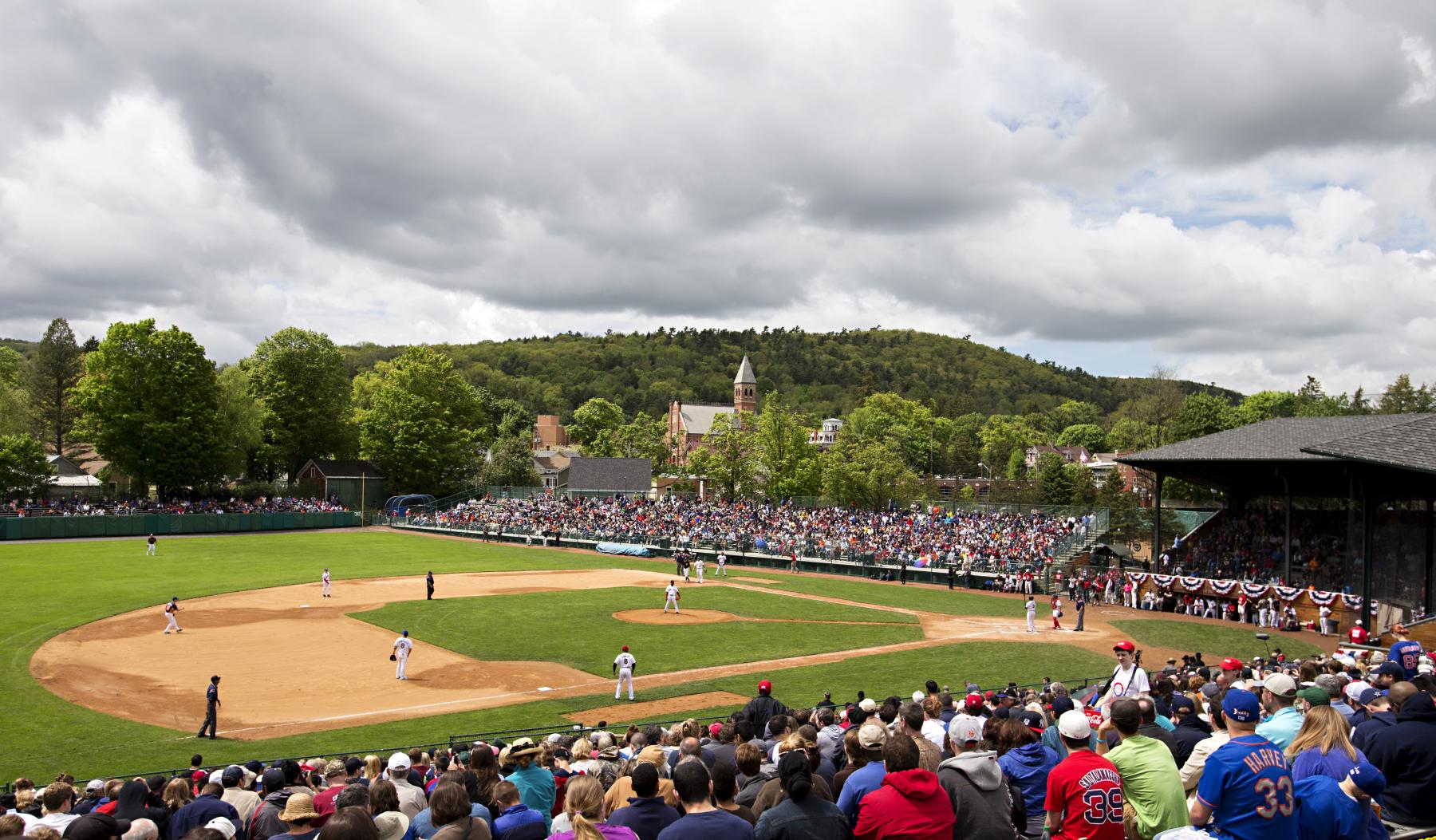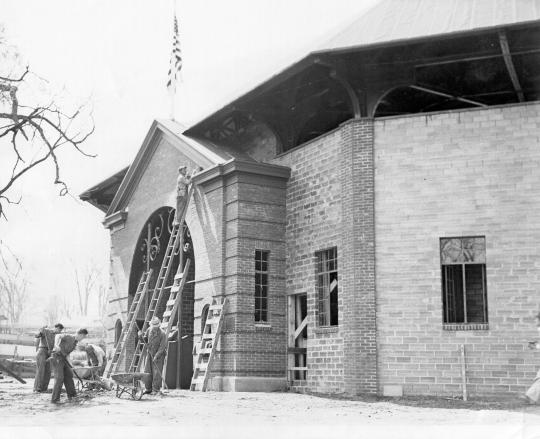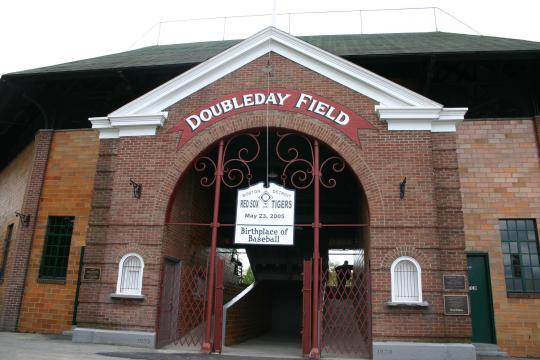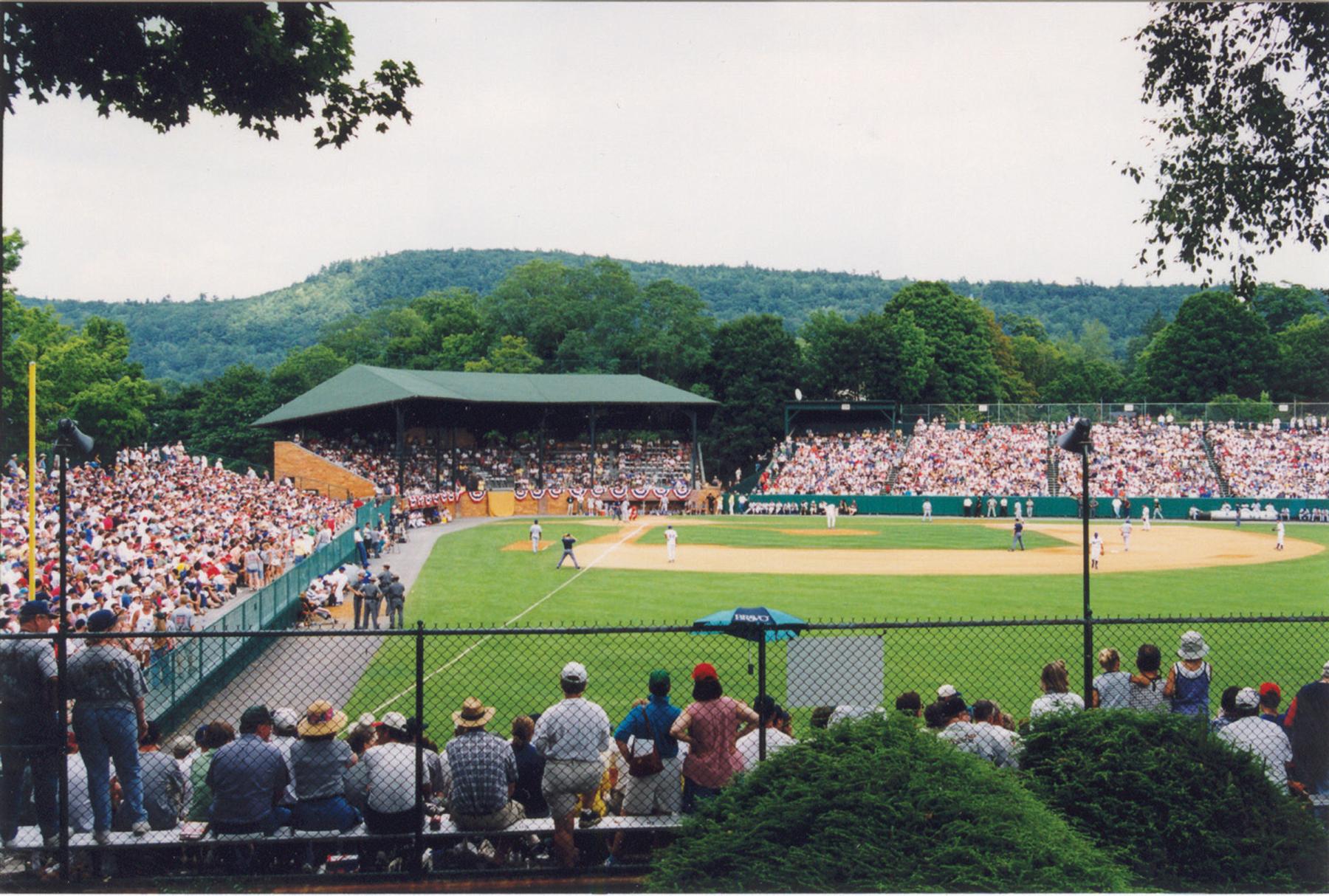History of Doubleday Field
To tell the story of Doubleday Field, one has to start with the Mills Commission, which was appointed in 1905 to determine the origin of baseball. Though the committee considered much evidence, the testimony of Abner Graves in support of Abner Doubleday figured prominently. Both Graves and Doubleday had attended school together in Cooperstown. In letters to the committee, Graves claimed to have been present when Doubleday made changes to a local version of "town ball."
The committee's final report, on Dec. 30, 1907, stated, in part, that "the first scheme for playing baseball, according to the best evidence obtainable to date, was devised by Abner Doubleday at Cooperstown, N.Y. in 1839."
The citizens of Cooperstown appreciated the acclaim Doubleday had brought to their small village, but did not find a suitable way to acknowledge it for many years. When National League President John Tener came to Cooperstown in 1916, he visited the Phinney lot, a plot of ground once believed to have been used by Doubleday and other Cooperstown schoolboys to play the first game of baseball in 1839, and suggested that the cow pasture be turned into a memorial to Doubleday.
After the land in which the lone baseball field in Cooperstown stood was purchased in 1917 to build a hospital, Cooperstown residents began to think of the Phinney lot as a suitable replacement. On June 2, 1919, the Cooperstown Chamber of Commerce’s Playground Committee secured a lease from Alexander Phinney, the current owner of the lot, for the use of the grounds for two years with the option to buy it for the sum of $5,000.
“The Playgrounds Committee of the Cooperstown Chamber of Commerce on Monday signed a lease for two years of the Phinney lot in this village for use as a baseball and playgrounds and thus the original baseball diamond of America will soon respond with the crack of the bat and ball,” the Cooperstown newspaper, The Freeman’s Journal, reported on June 4, 1919. “An appeal for volunteer labor will be made and the diamond placed in condition at once for games this summer.”
Soon the local citizens were leveling the field, with dirt and ashes used as filler on the swampy portions. On Sept. 6, 1920, Doubleday Field officially opened. The first game was between Milford and Cooperstown, and John Heydler, president of the National League, was present and umpired the first inning.
A vote in 1920 to buy the lot was turned down by the Cooperstown taxpayers, 204 to 151. With the lease set to expire, a fundraising effort to raise the $5,000 necessary to acquire the lot was led by Dr. Ernest L. Pitcher, a local dentist, and helped considerably by Dr. Harry L. Cruttenden, George H. Carley, Monroe F. Auger and Loren J. Gross.
The fundraising group was not only soliciting contributions, large and small, amongst its local denizens, but was reaching out to a wider audience. Even New York State Governor Alfred E. Smith was not immune.
In a letter dated Aug. 12, 1920, Governor Smith’s office replied, “The Governor has established a rule to decline all contributions because he does not possess sufficient funds to make these donations. In view of the fact that you ask only a dollar however, we will be very glad to send it, if you will agree not to use the Governor’s name; in other words if you want the dollar we will send it but because of the rule adopted we would not want you to advertise the contribution.”
“My congratulations upon the progress that has been made in liquidating the debt incurred by your village in the construction of Doubleday Field. For a village of 3,000 people, that is an accomplishment,” Landis wrote. “Baseball understands that through the Shrine Games (i.e. Hall of Fame games) played by Major League teams a material contribution has been made toward clearing that debt. It, therefore, will be very agreeable to the Major Leagues if the entire proceeds of the 1942 game are turned over to the village toward completion of the payment of the Doubleday Field debt.”
While Doubleday Field was playing host to mostly area youth, things changed in 1942, when World War II forced a minor league team, the Quebec Athletics of the Canadian-American League, to use it for spring training. Over the years the park has been the site of football games, concerts and community events.
In 1959, the first base section of the stands was donated by Thomas Yawkey, owner of the Boston Red Sox at the time. Doubleday Field has seen other changes, including new sections having replaced the old uncovered stands, where only the grandstand remains from when the refurbished park opened in 1939.
Today, the fabled 6,600-seat ball field, situated between Susquehanna, Pioneer, Elm and Main streets, surrounded in its idyllic setting with quaint houses and majestic trees, is not only a destination for baseball fans, but baseball teams from around the country.
Owned and operated by the village of Cooperstown, Doubleday Field will play host to more than 350 baseball games this year, ranging from youth baseball to high school and collegiate tournaments to senior leagues.
Bill Francis is the senior research and writing specialist at the National Baseball Hall of Fame and Museum

